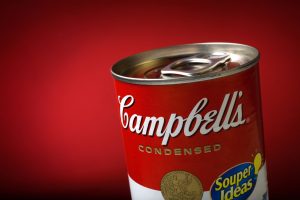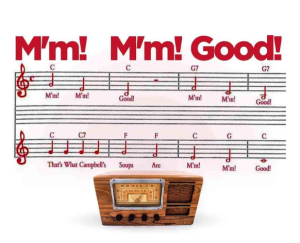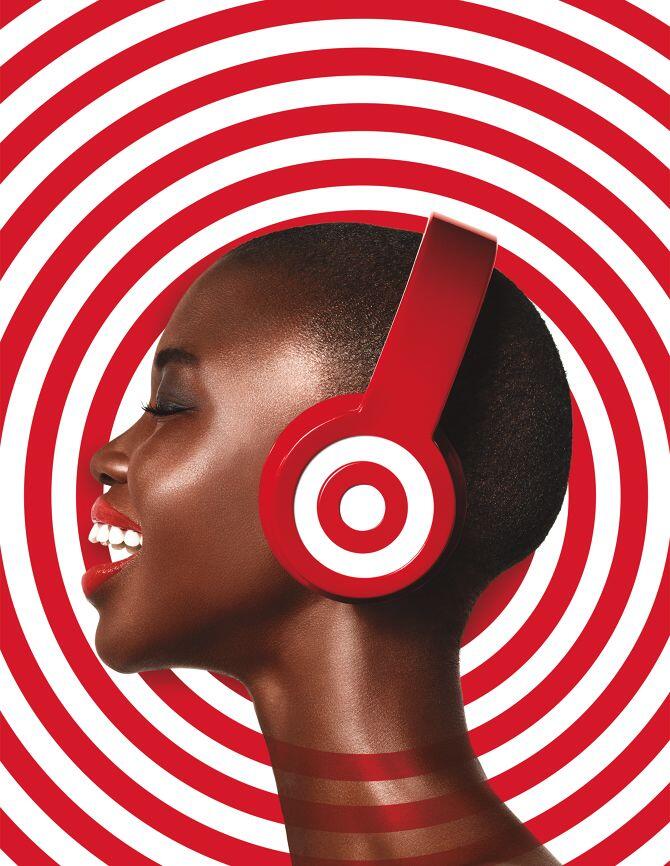![]() What are the common attributes of the world’s greatest brands? And more importantly, what can the average business owner, entrepreneur or marketing director learn from the greats?
What are the common attributes of the world’s greatest brands? And more importantly, what can the average business owner, entrepreneur or marketing director learn from the greats?
I could have done a listicle on the subject: “5 things that great brands have in common.” But that would have been lame… the form of the content would have been off brand for me. And it would not help differentiate my content from all the Ai-written marketing nonsense.
Which brings me to the first thing all great brands have in common:
Great brands are highly differentiated from the competition.
Brands like Ikea, Whole Foods and Nike play by their own rules. They break the preconceived notion of function, service, style or culture and catch the competition off guard.
They establish leadership positions by doing things differently.
Under Armour has risen past Adidas and grabbed second place behind Nike, and it wasn’t by making me-too products. They broke the preconceived notion of function in a t-shirt and have parlayed that into a sporting goods powerhouse.

Zappos differentiated itself in the E-commerce arena by focusing on service.
Tony Hsieh knew, from the very beginning, that it wasn’t just a matter of moving a lot of shoes. He wanted to be the Nordstrom of Ecommerce, and Hsieh built the entire operation around that one, core brand value.
Now it’s actually integrated into the Zappos brand identity. “Powered by Service” and “Delivering Happiness.”
These days, start-ups commonly pitch themselves as the Zappos of of this, and the Zappos of that… “The Zappos of office supplies.” “The Zappos of skateboarding.” “The Zappos of specialty foods.”
They all want to differentiate themselves by emulating Zappos, and then get bought by Amazon for $928 million. Like Zappos did.
Apple has always played by its own rules. It’s not just differentiated, it’s purposely contrarian.
It was born that way, as the counter-culture antithesis to Windows and corporate behemoths like IBM.
According to a 2002 Wired Magazine article, “they did it by building a sense of belonging to an elite club by portraying the Mac as embodying the values of righteous outsiderism and rebellion against injustice.”
Apple has an attitude.

So as I write this article on a MacBook Pro what does that say about me?
It says that I’m consciously creative. That I value design. That I like simplicity. That I’m not a corporate lemming. That I “think different.”
Outsiderism at work.
Those feelings were imprinted in me the first time I sat down at at a little Mac. And now those feelings keep replaying every time I pick up my iPhone.
Great brands connect on an emotional, gut level.
A hot bowl of soup on a cold winter day triggers feelings of comfort, love and security for millions of Americans. And the advertising for Campbell’s captured that sentiment perfectly. It’s M’m M’m Good! (That slogan, written in 1931 is ranked as one of the 10 best of the 20th century, and it was successfully resurrected in 2002.)


The ingrained goodwill that we have for Campbell’s Soup is what sustains the company amid MSG scares, shrinking category sales, and stiff competition from Progresso and other, healthier choices such as Amy’s. Campbell’s is a brand of powerful heritage.
Speaking of emotional attachment, let’s talk about Target, the country’s second-largest retailer.
 My daughter is an absolute brand fanatic. She lives for those Target shopping trips.
My daughter is an absolute brand fanatic. She lives for those Target shopping trips.
Target ads speak to her. The experience is superior to any other store. And she loves the products they carry. She jokingly admits to “having a problem.”
According to Harvard Business Review, Target’s business objective was to create an alternative to Wal-Mart’s price leadership. It’s done that through upscale discounting — a concept associating style, quality, and price competitiveness.
This “cheap-chic” strategy enabled Target to become a major brand and consumer-shopping destination, and was built around two interrelated branding activities:
 Designer partnerships and clever, creative advertising.
Designer partnerships and clever, creative advertising.
Target spends 2.3 percent of its revenues on advertising. Target’s agencies regularly come up with fun, memorable ad campaigns that maintain the brand’s hip design aesthetic that has helped transformed its signature bull’s-eye logo into a lifestyle symbol.
As my daughter put it, “Yeah, I follow them on Instagram because it’s aesthetically pleasing.”
Target’s brand promise is summed up very nicely in its tagline, “Expect More. Pay Less.” In other words, the value is a given, but there’s style too. Otherwise, millennials would dessert it faster than you can say “Where’d Sears go?”
Target has successfully associated its name with a younger, hipper, edgier image than its competitors. It’s not just Target, it’s “Tar-zhay.” And for my daughter, who grew up shopping there, it will always will have a special place in her heart.
If you’re a skier, you might be interested in the emotional attachment I have to my Head skis.
If you’re a motorcycle enthusiast, you’ll be familiar with the cult-like culture of Harley Davidson.
If you’re a driving enthusiast, you’ll relate to BMW’s brand messaging… “The Ultimate Driving Machine.” And you’ll understand that no one bought a Dodge Viper because of its product features.
Emotion is everything when it comes to building an iconic brand.
Great brands deliver on their promises year after year.
Target stays relevant by keeping up with the latest fashion trends and aligning itself with the right designers. The right stars. The right brand affiliations. It’s a constant effort to always keep things fresh.
Many business owners seem to think of branding as a one-time event — do it and it’s done. But that’s not it at all. Branding requires constant diligence.
You won’t stay competitive long enough to become iconic if you’re not delivering on your brand promise. To remain emotionally connected to your tribe, you have work at it on a day-to-day basis. Because an iconic brand does not guarantee business success.
Was Saturn iconic? Certainly for 20 years in automotive circles and in business schools.

What about Oldsmobile and Plymouth? Many icons of the auto industry have stalled, and ended up in the proverbial junkyard.
VW lost millions of fans when they duped the public on Diesel admissions. But the strength of the brand will carry it through. Eventually.
For about 10 years I was a loyal Audi owner. One holiday weekend I had to drive my Q7 two and half hours on a narrow, icy, highway that’s sketchy even on a clear, summer night. I felt security, safety, familiarity, excitement, satisfaction, indulgence.
The trip wasn’t exactly fun, but it reinforced all my beliefs about the brand: Best damn cars for snowy roads. Period.
Ultimately, however, the brand lost me.
I gave up that extra sense of security on snowy roads in favor of financial security and less hassle. I just couldn’t justify the expense of long-term Audi ownership. I literally felt sick every time I had to check into the service department at the dealership.
The Audi brand couldn’t deliver on its promise when my car was in shop all the time.
Great brands have a clear sense of purpose.
Your brand’s purpose isn’t to make money. That’s the purpose of the business… profit in the shareholder’s pockets. The brand needs to stand for something deeper and more meaningful than that.
Nike sells shoes and apparel, but it’s purpose is to inspire action, performance and personal achievement. “Just Do It.”
Starbucks sells coffee and fast food, but it’s purpose is to fill a void in our busy lives. As Howard Shultz once said, “A burger joint fills the belly, but a good coffeehouse fills the soul.”
Coke-a-Cola sells sugar water, but the brand’s purpose is to spread American values around the world. It’s a little taste of freedom in a bottle.
Ikea sells cheap furniture that you have to painstakingly assemble. But it’s purpose is to bring affordable, modern design to the masses.

Patagonia is a brand with a very clear sense of purpose and a consistent, compelling story to match. They use an authentic, visual narrative. No staged shots of pretty boy models. No over-explanation.
It’s an approach that establishes that intangible, emotional connection that fuels success and inspires people… Participate in the outdoors and help save our wild, beautiful places.
According to the 2023 Harris Poll on brands, Patagonia is now the most loved brand in the U. S. That’s because they walk the talk when it comes to the company’s higher purpose.
Yvon Chouinard walked the talk when he handed the company over to a consortium of non-profits. And they walk the talk when they run ads like these:

What is the purpose of your business, beyond making a profit? Figure it out, write it down, and then start communicating that purpose relentlessly.
I’m not asking, “What non profit causes do you support?” That a different question altogether.
If you need help with that, call me. And here’s a great article on purpose-driven companies from HBR.
Great brands are great communicators.
A strong, purpose-driven culture won’t help if you don’t communicate clearly. So storytelling skills and consistent messaging are another thing that great brands have in common.
It’s a challenge to stay “on message.” Just ask any politician.
That’s where many companies go wrong… their advertising says one thing, their social media campaigns say another thing, their website communicates something else and their influencers are off doing their own thing entirely.
Consistency and alignment is something all great brands have in common.
Great brands say, “this is our story and we’re sticking with it.” So you see the same theme sprinkled throughout every communication channel.
And by the way, all great brands maintain consistent exposure in many different ways. Social media is not the only answer.
And last but not least…
Great brands design and sell great products.
They don’t rest on their laurels and quit making good stuff once they’ve become iconic.
Nike dominated the 2023 Track and Field World Championships and the Paris Olympics in 24 with their neon spikes that everyone’s wearing to break records.
So always remember, effective branding begins by developing outstanding products that people want to shout about.
Try this article for more on what great brands have in common.
For help with your own brand, make an appointment with me at BNBranding. We’ll get your messages aligned, and your advertising noticed.


Great blog about what do great brands have in common provided me such great information thanks again for such a great blog
I found your post really informative. you have mention some useful points that can help us.
Great read about branding! Really loved your idea about great brands having a clear sense of purpose which hit me hard. Amazing article.
Like the way you have highlighted the common threads that tie great brands together. Standing out from the crowd, resonating with customers, having a clear mission, and effectively conveying the brand message are all essential for building a strong brand.
Great article, thank you! Besides all the good thoughts you have, I always think: the best brands carry their brand strategy over to the business level and not just communications.